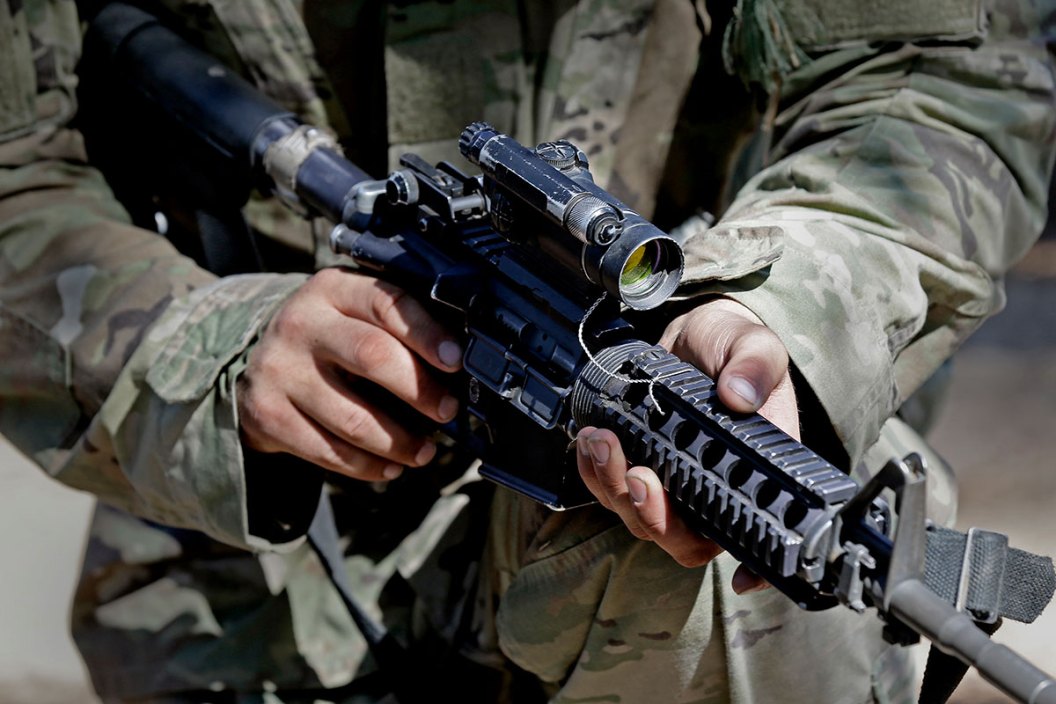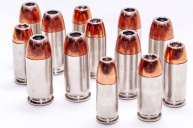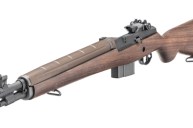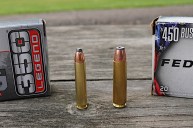What defines a carbine? It's a little more complicated than "a rifle with a shorter barrel."
It's one of those questions you internally think you know the answer to, until you start to really think about it, or until you try to explain it to someone who is new to guns.
What the heck is a carbine? Pose that question on a gun forum or Reddit and you'll be appalled at how quickly arguments arise and then get off the rails.
The first definition that usually springs to mind is "a rifle with a short barrel" or simply "a short rifle." Then one immediately asks why—why one would want a shorter rifle.
The ready answers are that they're more favorable for close quarters engagements from a tactical perspective and, from a hunting perspective, they're easier to carry and maneuver in dense brush and over difficult terrain. They're also easier to use on horseback, but more on that later.
After all, the Colt M4 Carbine is the shorter version of the military M16 assault rifle as far as the United States military and U.S. Army are concerned. Other than a shorter barrel and handguard, they're nearly identical.
The M1 Carbine, first issued in WWII, was a short, shoulder-mounted, semi-auto firearm chambered for an intermediate cartridge that fell somewhere between a pistol cartridge and a rifle cartridge in terms of power and velocity and it was meant to be a shorter, lighter firearm instead of the M1 Garand battle rifle. So, that has to be what it means.
But not so fast. At what barrel length does a rifle become a carbine? And at exactly what dimensions does a full-auto carbine become a submachine gun?
Definitions
Okay, let's look it up, and for the moment, let's put legal definitions and ATF terms to the side. The definition of "carbine" from dictionary.com reads as follows:
1: a light, gas-operated semiautomatic rifle.
2: (formerly) a short rifle used in the cavalry.
Well, dictionary.com requires a carbine to be gas operated and semiautomatic—and I think a lot of lever actions and bolt actions would have something to say about that, not to mention the caplocks and flintlocks that came before them.
So, what does ol' Merriam Webster have to say? Their definition is a bit better:
1: a short-barreled lightweight firearm originally used by cavalry
2: a light short-barreled repeating rifle that is used as a supplementary military arm or for hunting in dense brush
That definition helps a bit more by offering some historical basis: cavalry.
Where "Carbine" Comes From
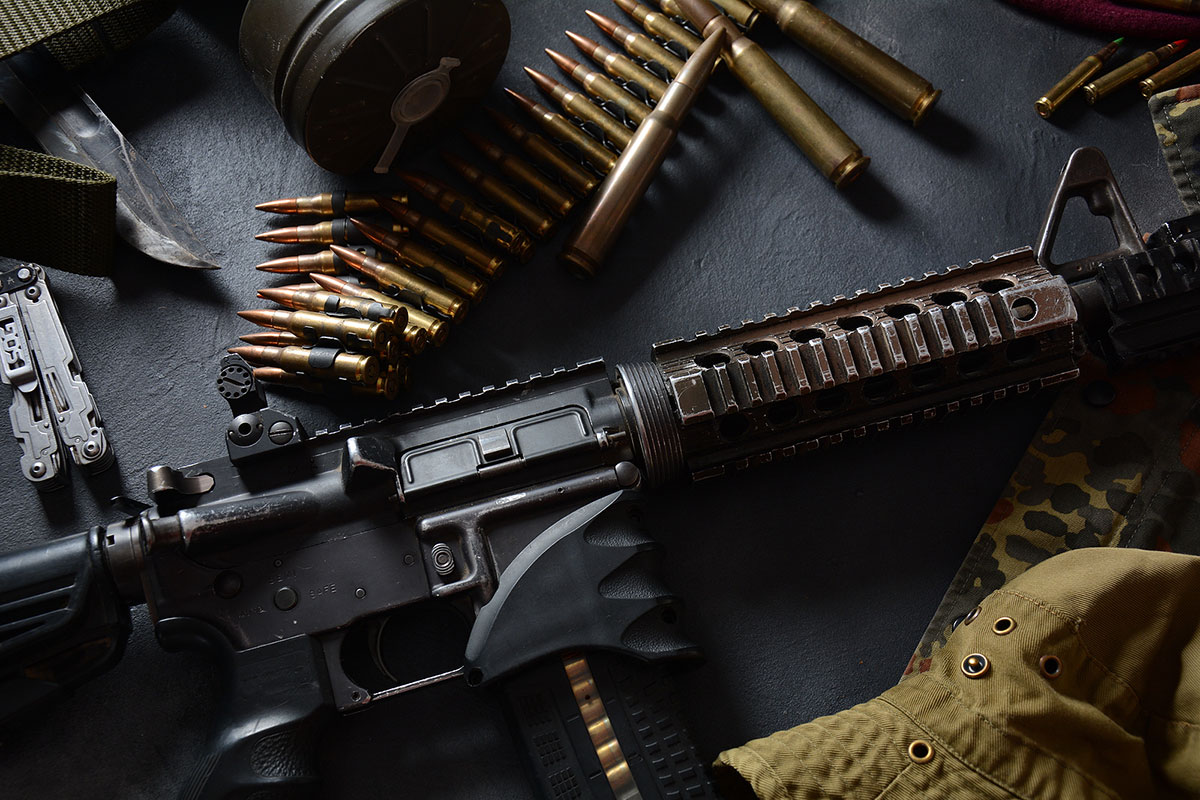
Carbines were, indeed, originally developed for cavalry use—in fact, French calvary troopers were once called carabiniers, from the French word "carabine," which literally means "rifle." Why we now use "carabiners" to go rock climbing, I don't know. Nonetheless, that's where "carbine" comes from.
When the first firearms made their way to the battlefield in the 1500s in the hands of infantry, calvary soldiers also needed to be armed, but muzzleloading long guns were kind of tough to use on horseback while riding and getting shot at while avoiding spears and swords. Some opted to arm themselves with multiple single-shot pistols, while others fielded shorter versions of the smoothbore infantry arquebus. These were the first carbines.
They were still extremely difficult to reload in the heat of battle and the saber would remain more effective for a soldier on horseback for quite some time. From the get go, a shorter, lighter, more maneuverable gun meant certain trade-offs, namely less accuracy and muzzle velocity due to the shorter barrel, and, with the exception of bullpups, that still holds true today.
The Support Role
Here we come to the second part of a carbine's military definition. During the Napoleonic wars, cavalry were outfitted with pistols and carbines, and support and artillery troops began to favor carbines over infantry rifles as well. This is because they would often need to defend themselves from attack, but were hindered by keeping a full sized long gun with them at all times. Plus, a carbine was more effective and easier to aim than a pistol.
That's precisely the same reason many troops in non-infantry roles, like tankers and artillery, were issued the M1 Carbine hundreds of years later in World War II instead of the long and heavy standard infantry weapon of the time, the M1 Garand.
What Is the Max Barrel Length for a Carbine?
So that's how "carbines" started, as short rifles for soldiers on horseback. Now here's where it begins to get muddy.
The barrel length of rifles have been shrinking over the years. For instance, a typical barrel length for a Kentucky Long Rifle in the 1700s was about 32 inches. That would be considered an extremely and unnecessarily long barrel by today's standards.
Advancements in rifling, barrel construction, and, most of all ammunition have made it so less barrel length is needed for high velocity projectiles to reach their necessary speed. Today's hunting rifles typically have 20- to 24-inch barrels, with 26- to 28-inch barrels the max and considered quite long.
So, does a carbine mean any rifle with a barrel shorter than 20 inches?
Let's look at military arms again. The M16A4, the latest iteration of the M16 rifle, has a 20-inch barrel. The M4A1 has a 14.5-inch barrel. So, it would seem to be the case.
Does Chambering Matter?
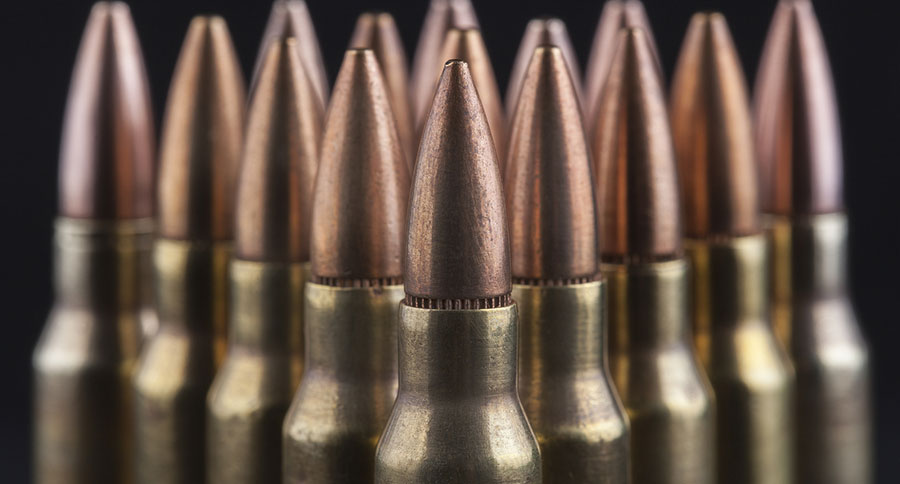
But what about the cartridge for which a gun is chambered? A carbine doesn't technically have to be chambered in an intermediate or pistol caliber, but they often are, for a few reasons.
A smaller gun almost always means a lighter gun, and that means more felt recoil for the shooter. Intermediate cartridges generate less recoil than full-power rifle cartridges, making them a better option for controllability. And while rifle cartridges see a decrease in performance with less barrel length, pistol cartridges see an increase in muzzle velocity and accuracy when fired through a longer barrel compared to that of a handgun, while also generating very manageable recoil in a light carbine.
It would seem a carbine can be chambered in pretty much any caliber, rifle or pistol.
What About ATF Definitions?
If you mix in how the ATF and NFA (National Firearms Act of 1934, one of the oldest pieces of gun control legislation on the books) define "rifles" and iterations therein, things get a little confusing.
The feds say a rifle has to have a barrel length of at least 16 inches and an overall length of at least 26 inches, but they don't define a "carbine." They define "short barreled rifles," which require a tax stamp to own, as a rifle with a barrel under 16 inches in length. But if the NFA never existed, would rifles with 15-inch barrels be called carbines, the way the M4 is called a carbine with its 14.5-inch barrel? Most likely, yes.
What we can say is, since the 1930s, ATF rules and gun control laws have certainly helped determine what a carbine is in the United States.
Does Semi-Auto vs. Full Auto Matter?
So taking all that into account, we can say a modern carbine is a shoulder-mounted firearm with a barrel between 16 and 20 inches, designed with maneuverability in mind, and chambered in a rifle or pistol caliber.
If a shoulder mounted firearm is semiautomatic and has a barrel of less than 16 inches, it's a short barreled rifle per the ATF. If it has no stock or has a brace, it's a pistol. The Ruger PC Carbine (Pistol Caliber Carbine) is a newer firearm that fits perfectly and even has "carbine" in its name. It comes chambered in 9mm or .40 S&W, both handgun cartridges, and it has a shoulder stock and a 16.5-inch barrel.
So we've got it all covered, right? Not really.
What about something like the H&K MP5 and its many variants? Heckler & Koch calls the MP5 a machine pistol. It's often categorized as a submachine gun in its select-fire form. But the MP5 is sometimes sold with a 16-inch barrel as a "carbine" in semiautomatic only, and HK even makes a semi-auto variant without a buttstock, the classic pistol grip, and the original barrel length that's sold as a pistol.
What Have We Learned?
After all that, we only know a few things for sure:
- The term "carbine" isn't really a specifically defined term in the gun world today. Instead, it's a fairly broad term often applied by shooters and gun manufacturers that implies a collection of characteristics, namely a gun with a shoulder stock and a barrel that is shorter than a full length rifle barrel, which today is between 20 and 26 inches. And that's really it.
- Most "short-barreled rifles" are carbines, legal definitions aside.
- Some guns that are called rifles by the companies who make them, by these criteria, would be considered carbines.
- Some submachine guns with stocks could technically be considered carbines.
- "Carbine" once meant a shortened version of a rifle for calvary, and today it simply means a relatively short firearm with rifle characteristics that is designed to be maneuverable and to be used at moderate distances.
An acceptable modern definition for a carbine, allowing for exceptions, would be: a shoulder-mounted firearm with a barrel between 16 and 20 inches, with any action type, that is chambered for a pistol or rifle cartridge and designed with maneuverability in mind.
One thing we can say for certain that carbines are NOT, and that is long-range firearms.
NEXT: OUT-OF-THE-BOX DEFENSE GUNS YOU MAY NOT HAVE CONSIDERED
WATCH
